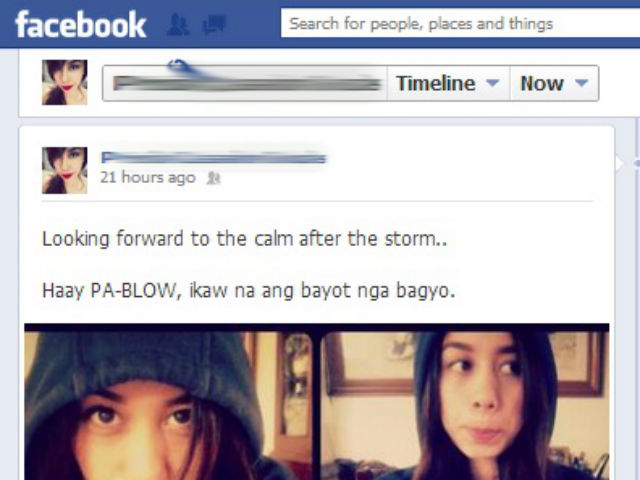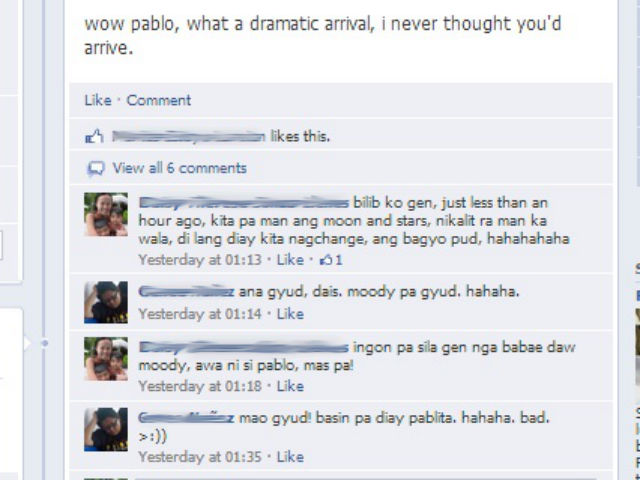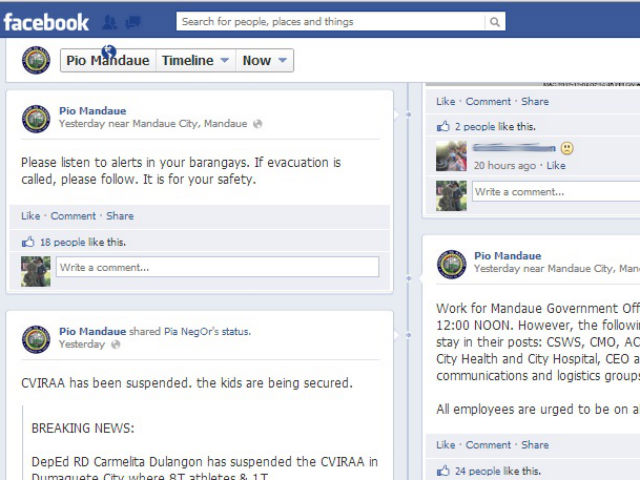SUMMARY
This is AI generated summarization, which may have errors. For context, always refer to the full article.
 With advances in information and communications technology, social networking sites increasingly offer the convenience of getting real time updates on almost anything and everything.
With advances in information and communications technology, social networking sites increasingly offer the convenience of getting real time updates on almost anything and everything.
Social media as a tool for disaster preparation and recovery is gaining recognition and significance, particularly in disaster-prone areas like Hawaii. The University of Hawaii, for example, offers a course on “Social Media for National Disaster Response and Recovery.”
Although the Philippines has been reported as one of the Top 5 nations with the largest number of Facebook (FB) users, and despite the grave threats of disasters and calamities annually, the involvement of social media in disaster preparation has been rather moderate or perhaps, even disastrous.
I was in Manila last February when I received a phone call from my mom, in a state of panic, informing me that a tsunami warning was issued for the city of Cebu. The city center was in a state of chaos. People left their cars and buses in the streets to head for higher ground.
Later that day, it became apparent that the warning was issued as a matter of protocol after an earthquake. People were not informed, however, of this protocol. In other words, the lack of information and miscommunication triggered a potentially chaotic and disastrous response.
Social media and disasters
It is common for Cebuanos to joke about that tsunami scare; however, upon reflection it does call to question the relevant, albeit potentially disturbing, role of social media in a disaster. Personally, I was curious if the use of social media in such context has changed in Cebu since that incident. My curiosity was somehow satisfied when Typhoon “Pablo” (international codename Bopha) entered the Philippines.
Early Monday morning, December 3, I received a text message from a friend working with the Mandaue City Public Information Office (PIO) asking me for the website that I subscribe to for tropical storm alerts.
I have subscribed to www.tropicalstormrisk.com ever since I was stranded in Singapore in 2006 without any weather update or flight information from the airline provider. Back then, I was not active in any social networking site. Nor did I have Facebook (FB).
When it became clear that Pablo was paying Cebu a visit, the Mandaue City PIO started posting typhoon-related updates online through social networking sites such as FB and Twitter. Among these were safety reminders, emergency procedures, official announcements from the Department of Education, flight cancellations, and the location of the typhoon and its expected arrival in Cebu.
Cebu raised Storm Signal No. 1 Tuesday morning (December 4), so classes at the Kindergarten Level were suspended. By 12 noon of Monday, the heat and humidity defied the storm signal declared earlier and FB status updates reflected the anticipation of the storm and the annoyance of parents about why classes had to be suspended.
While common knowledge affirms the unpredictability of weather, the fact that it was tremendously hot and humid the whole day made some people anxious for Pablo’s arrival.
Heavy rains came at around 1:00 am on Tuesday morning. Mandaue City’s PIO continued to give hourly updates and reminders. Those in Cebu who were still awake welcomed Pablo with their status updates, some even posting photos of food and materials (e.g. flashlights and candles) they prepared.
With a lot of reminders, preparation and anticipation, it appears that a number of Cebuanos were able to keep calm.
Pablo arrived calmly in Cebu City. Meanwhile, FB users never left their screens. It is interesting to note how the eager and prepared Cebuanos seemed disappointed that Pablo did not meet their expectations. Some updated their status referring to Pablo as “Pa-Blow, ang bayot na bagyo” (Pa-Blow, the gay typhoon) or “Pablita.”

However, there were more posts expressing relief that Pablo did not release its wrath on Cebu, or in the northern parts, at least. As I write, Pablo has passed over the southern parts of Cebu which was forecast to experience stronger winds and rain.

The Mandaue City Command Center, which includes its PIO, continues to monitor Pablo, including flood alerts and areas to avoid. Thanks to information dissemination and awareness campaigns such as that of Mandaue City’s PIO, we are better guided on how to prepare and respond.
Perhaps it is one of the few, if not the only, local government PIO that has tapped social media for disaster preparation and response. Hopefully, other government units have adopted a similar strategy, and episodes such as false tsunami warnings are well-avoided with better structures for communication and information dissemination to the public. – Rappler.com
Bonita Cabiles is a resident of Mandaue City, Cebu. She recently completed her Masters Degree at the Institue of Education, University of London, UK.
Add a comment
How does this make you feel?


There are no comments yet. Add your comment to start the conversation.